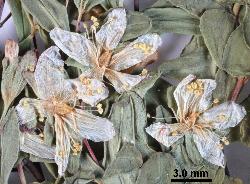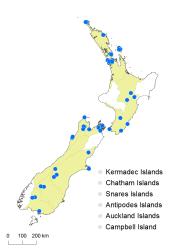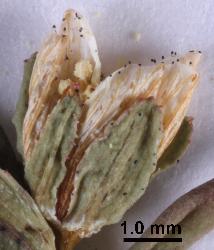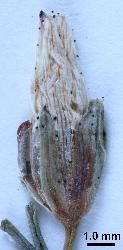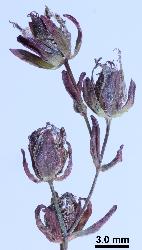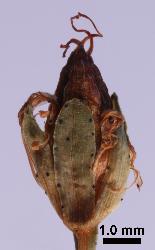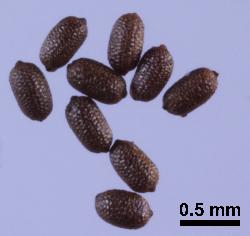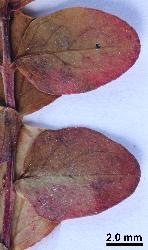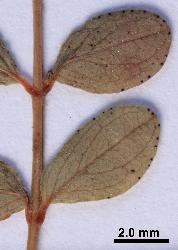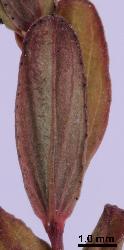- Taxon
- Gallery
Subshrub, woody stock, not rhizomatous, up to 0.37 m high. Stems decumbent to prostrate, 0.5–1.0 mm diam., terete, 2-lined, black glands absent. Leaves 1.5–14.0 mm long, 0.5–7.7 mm wide, broadly ovate, elliptic-lanceolate, lanceolate, ovate-elliptic or elliptic-oblong, glabrous, reticulate tertiary veins absent; pellucid glands inconspicuous; black glands intramarginal; apex obtuse or rounded, mucronulate; margin entire; base cuneate, obtuse or rounded; petiole 0.1–0.6 mm long. Inflorescence terminal, in cymes, flowers 1–27, corolla 5–13 mm diam. Pedicels 1.5–9.5 mm long. Bracteoles absent. Sepals 5, 2.0–5.5 mm long, 0.8–3.4 mm wide, unequal, elliptic, broadly elliptic, broadly elliptic-ovate, elliptic-oblong, ovate, narrowly ovate or oblong-lanceolate; pellucid glands absent, or present and then usually linear, sometimes obscure; black glands present at margin or scattered over surface, margin glands occasionally stalked; apex subacute or obtuse; margin entire or irregularly toothed in upper part. Petals 5.0–7.5 mm long, longer than sepals, lanceolate, oblanceolate or obovate, golden, black glands at margin or scattered over surface, persistent after anthesis. Stamens in 3 bundles, 11–17, 2.2–6.0 mm long, shorter than petals; anthers 0.3–0.4 mm long, anther gland orange. Ovary 1.8–2.6 mm long, 0.9–1.4 mm wide, narrowly ovoid. Styles 3, 1.6–2.5 mm long, similar length to ovary. Fruit capsule, 3.7–5.2 mm long, 2.1–3.5 mm wide, ovoid or narrowly ovoid, light brown, slightly exceeding petals. Seeds 0.4–0.7 mm long, 0.3–0.4 mm wide, oblong, terete, dark brown to black, apices obtuse or rounded.
H. humifusum is distinguished by a decumbent to prostrate growth habit, terete and 2-lined stems, small (up to 14.0 mm long) leaves, conspicuous black glands on the leaves, sepals and petals, and unequal sepals. Sometimes confused with H. pusillum, but that species has quadrangular 4-lined stems and does not have any black glands.
North Island: Northland, Auckland, Volcanic Plateau, Southern North Island.
South Island: Western Nelson, Sounds Nelson, Westland, Canterbury, Otago, Southland.
Occurs in a wide variety of mostly disturbed, sparsely vegetated, or open habitats. These include depleted pasture and tussock grasslands, lawns, on hillslopes, dry and stony roadsides, tracks and driveways, roadside banks, wasteland, and sandy, wet or clay soils.
Hooker (1867, p. 758). Voucher: not seen.
Flowering: Dec.–Feb.
New Zealand plants of H. humifusum vary considerably. The leaves range in shape from broadly ovate, elliptic-lanceolate, lanceolate, ovate-elliptic to elliptic-oblong. The sepals also vary in the position and number of black glands, with these being on the lamina, intramarginal, and/or on the apices of marginal teeth.



